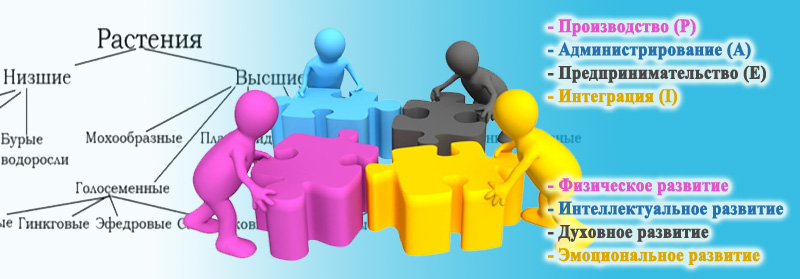I will continue the topic of "machines" and "plants" and today we will talk about "plants" ... Many scientists agree that agile teams have all the signs of a living entity, which means that we can look at the team as a living entity, with everyone inherent features and properties. And the first thing that catches your eye is that all living things on our planet are classified and belong to one or another group, while about teams (or other groups of people united by a common goal) we can only say that they are all different ... I would like to discuss this topic and suggest your own method for classifying teams.

Introduction
The article "From" machines "to" plants "or my experience of transition to agile" aroused the interest of the community, many acquaintances expressed their approval and agreement with the described actions and suggested continuing the development of this topic. I accept this offer, besides, I have some fresh thoughts and ideas that are interesting to share ...
, , ( " " agile , "", ). , , — [1] PAEI [2] , , , , " ", !
?
, agile , , , , . , — , ( , ) , …
, , , . , , . - , - , . , agile.
, agile ( , ), , , .
?
, agile? agile, — , , , , :
- ( ), , ;
- ( ), ;
(, - , ). (, , , ). , … ?
" ", . , " ", . [1] " " , :
- ;
- ;
- ( — );
- ( ).
, , , "" . , , — PAEI [2], , , . , , agile ( ).
, ( , ) :
- (P), ;
- (A), ;
- (E), ;
- (I), .
, , … () PAEI [2]. , , [3]. , PAEI "" , , .
...
, ?
, ? … ? :
- . , ? , , — . . , ( ) . PAEI, .
- . PAEI (), . , () . / ( , ) / . , , .
- . , ? , . , (-). / / -, .
- PAEI. , , PAEI . , .
, :
- PAEI <-> ;
- PAEI <-> ;
- PAEI <-> ;
- PAEI <-> .
( !)
?
! , , , .
, . 4- . — , , -. ?
, "" ( PAEI <-> ), - ( PAEI <-> ), ( PAEI <-> ), ( PAEI <-> ). , .
, . , , , .
, "" ( PAEI <-> ), - , , ( PAEI ) , ( PAEI <-> ), . ? , , " , ", "", .
"", ( PAEI <-> ) "". , "", (, ), - ( , ), ( , ).
"" ( ) . , PAEI <-> PAEI <-> , . , (" ") - - ( ).
"" ( PAEI <-> ). , " ".
, . , , ( ).
— , , , ( ). , ( ). , — " , ?", — .
?
, . ( ) , . , , ( ), ( ) , , . , … .
, , , , , .
— , , , . — SAFe (agile agile), ( ), .
. , , — , : , , . (, ).
In the meantime, let's go down to earth (more precisely in the organization) and return to the teams. It is very interesting to know what your team would look like if it were human, does it fit any well-known psychotype?
Nikolay Zakharenkov,
http://i-am-a-programmer.ru/
Literature cited in the article:
1. "Seven Habits of Highly Effective People" by Stephen Covey
2. "Styles of management - effective and ineffective" Yitzhak Adizes
3. “The ideal leader. Why they cannot become and what follows from this ”Yitzhak Adizes